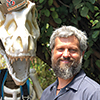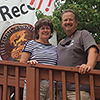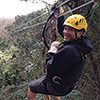Aerial adventure parks across North America are adding and updating photo systems to meet the growing consumer demand for high-quality, shareable pictures of their high-flying adventures. But as demand increases, so does the debate around what the most effective approach is.
We asked a few suppliers and operators for their take on the questions we think are central to the discussion. Their views are often divergent, and sometimes conflicting—if we had them all in a room together, the discussion would have run for hours. As it is, the following presents plenty of food for thought.
OUR PANELISTS:
- Neal Belovay, Co-Founder, PicThrive
- Steve Brown, Adventure Director, Mount Hermon Adventures, Calif. (Action Photo Systems)
- Mona Campbell, Director of Marketing, Canopy Tours Northwest, Wash. (SnapSportz)
- Derek Green, Owner, Koloa Zipline, Hawaii (Fotaflo)
- Donna Holder Owner and Founder, American Adventure Park Systems, Historic Banning Mills, Ga. (Fotaflo)
- Ben Kottke CEO and Founder, SnapSportz
- Ryan O’Grady President, Fotaflo
- Nate Pfefferkorn Co-Owner, Action Photo Systems
QUESTION 1: Adventure Park Insider: DO YOU RUN OR RECOMMEND RUNNING AN AUTOMATED SYSTEM OR MANUAL CAMERAS? WHAT ARE THE BENEFITS TO YOUR PREFERRED SYSTEM?
Nate Pfefferkorn: Really whichever the client prefers—we have solutions for both. In the long run, I think a fully automated system provides the best images day after day and requires no additional staff to operate.
Ben Kottke: The advantage to handheld is that you get more photos, but I don’t think they are as good. With automated, we are able to put a cannon camera with a nice lens somewhere where, I don’t care if you take a cellphone photo of your customer, we are going to get a better photo because we are up in a tree and nobody’s going to climb that.
Donna Holder: We feel like manual cameras are better due to the images being more personal and candid. Automated is a lot of maintenance—lightning strikes, a cord is loose or needs repairs, the camera has to be positioned right—and if a system goes down, it is usually all down.
Mona Campbell: We have a photo system with three components: two automated cameras, a guest operated selfie station, and a manual camera. The automated system is an essential part of our photo system, providing guests with action photos while zip lining, photos they would not otherwise be able to capture. The selfie station is a fun addition providing an opportunity for guests to get specific group shots or take goofy pictures of themselves in the context of the zip line course. Finally, the manual camera allows us to provide group pictures capturing the start of their adventure, including specific elements such as our Unimog or in fall, our pumpkin patch.
Neal Belovay: It takes more than just a piece of hardware to ensure guests are provided with the best experience. Each business is unique, and it’s the guest experience that matters.

PicThrive booth at High Flyer Foxwoods.
QUESTION 2: HOW DOES THE SYSTEM IMPACT THE QUALITY OF IMAGES?
Nate: For our permanently installed systems, we’ve perfected image triggering and use flash to ensure a quality image regardless of conditions. A manual photographer can certainly capture good images, though it depends much more heavily on the skills of the photographer. We have clients that use both automated and manual image capture together seamlessly.

Action Photo Systems cameras in their natural habitat.
Ryan O’Grady: At first it would seem that automated is superior and manual is inferior. Data has taught us that the guest’s perception of quality relates specifically to the manner in which they appear in the photos, not the digital quality. Guests just want to look good and see their face in a clear photo. Manual camera photos allow operators to create an experience by taking the photo, inspecting the photo to ensure the subject is smiling, looking good and the photo isn’t blurry, then taking another if needed.
Donna: At our park, which is really different—we have 10 miles of cable in the trees, so we do not just have one or two levels—the automated system seems to have better resolution, but you can’t see heights, facial closeups, or posed shots as well. With manual cameras, even though we have set places, we seem to be able to get better posed and candid shots. We have done both type of systems, and manual photos seem to sell better.
Steve Brown: It is nice to be able to give your guests options, where they can have the group photo and take that home as a family, or they can have the individual picture and send that to friends or post that to social media. I don’t think either style hurts the quality; both types of images can be great quality.
Derek Green: The quality of our pictures is limited to the technology available. Most of our guests use these pictures for social media purposes. I find very few guests, in this day and age, who will print and frame these tour photos. Therefore, high-resolution photos aren’t as necessary as they used to be.
QUESTION 3: DOES THE QUALITY OF IMAGES HAVE ANY DIRECT CORRELATION TO SALES?
Ben: Absolutely. Now, there are probably people who are going to buy the photo either way. But, as a whole, DSLRs are able to take better photos than cellphones. They are also able to take raw images with ten times the resolution. At some point, that is definitely going to translate to better sales.
Mona: Yes! Since our upgrade [to SnapSportz]has provided better quality, our photo sales have increased.
Nate: Absolutely! Since everyone can take great images these days with their phone, people will not pay money for poor quality images. It’s important that whatever images are captured are interesting, tell the story of the guests’ experience, and could not be reproduced with their cell phone.

Action Photo Systems captures the fun at Mount Hermon.
Ryan: Yes, but this relates specifically to the quality of the subject matter, not the digital quality. Over the last 7 million photos of more than 1 million guests taken through Fotaflo, we’ve seen first-hand that digital quality (i.e. megapixels, camera sensors, etc.) has little to no correlation to the guest’s perception of quality and sales. Guests just want to see their face and look good in the photo.
Neal: A multitude of factors impact whether or not a guest actually wants a single photo. We work closely with our partners, providing them with industry expertise, to ensure guests get a unique product that they are proud of.
QUESTION 4: FREE PHOTOS MAY GENERATE MORE MARKETING, WHILE FOR-FEE PHOTOS WILL LIKELY ADD REVENUE. HOW DO YOU WEIGHT MARKETING OPPORTUNITIES AGAINST REVENUE IN THAT DECISION?
Donna: Free photos are a big hit so far with guests. Free photos cut down on guest disappointment if something happens to the system or a person got missed somehow in the taking of the photos. That is rare, but it does happen on occasion. Nowadays, if someone pays for something, they want it to be perfect and immediate.
Ryan: Our experience has taught us that when we convert guest photographs into social media shares it empowers guests to share stories of themselves and tell better stories than we can as an operator. Operators that give away photos will convert more leads and inquiries to bookings, increase referral business, increase repeat business, and increase the value and volume of online reviews.
Derek: I am still weighing the revenue aspect of “free photos.” I have seen many guests book through the link we have embedded in the pictures that people share online. Selling a $30 photo flash drive has immediate satisfaction, but I trust that the marketing aspect of free photos will translate to ticket sales, and I would rather sell tickets than flash drives.
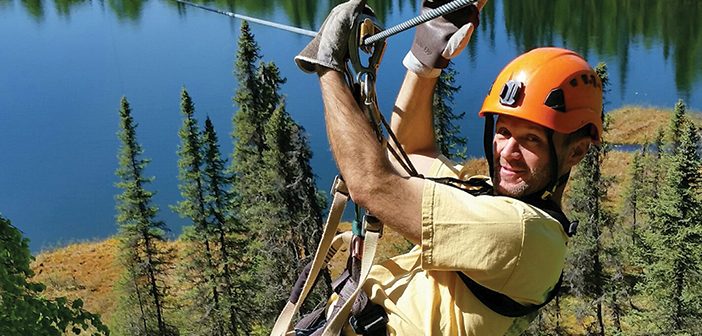
Denali canopy zip line photo by Fotaflo.
Ben: It is really important to look at social media and make sure you know what your business is and what your market is and how you are going to get a return on your investment. You get people here in Hawaii that are paying top dollar for photos. They are still sharing their photos, so those effects are still supposedly resonating, but the impact is small because your total available market is small.
Steve: We sell all our photos. Guests take so many photos with their own phones and cameras and they are going to post those to social media for us. That kind of handles itself, so we see it as an added revenue stream.
QUESTION 5: HOW DOES HAVING AN AUTOMATED OR MANUAL SYSTEM AFFECT THE GUIDE’S JOB?
Ben: The assumption that guides can be tasked to be photographers at the same time that they are entrusted to be in charge of people’s safety and their lives is a dangerous one. They are doing more than one job, when their main job should be safety.
Nate: It really depends on the role of the guide on the particular tour. On many of the zip line tours we work with, the operators are strongly against guides taking photos, because they are concerned about having the guide be responsible for guest safety, tour information, and the client experience. In the aerial adventure course market, however, the guide often has a different scope of responsibilities, and taking photos is actually helpful in encouraging the staff to interact with guests.
Derek: Some guides love it and understand how to “work it.” Others tend to do it because it’s their job. I created a series of “must have” shots that the guides take based on actual data of the types of shared pictures on social media. A well-trained guide will use the camera as a tool to enhance the guest’s experience, which hopefully leads to better tips and happier guests.
Donna: We have a set number of photos to be taken on each level, and it increases interactions with guests/guides. It does not affect the pace so far, and it does not reduce safety, because of where we take the photos. The automated system [we used to operate]did not affect flow or safety, but offered no extra interaction with the guests.
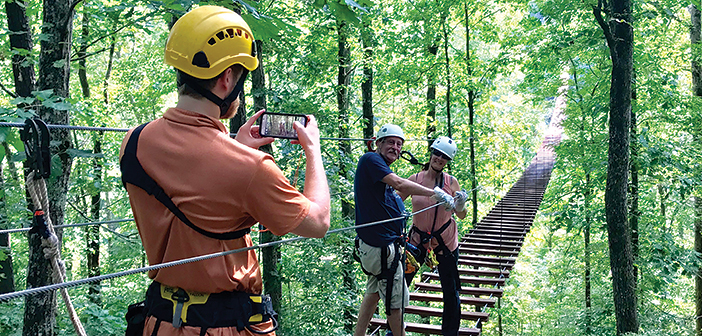
Historic Banning Mills uses Fotaflo, and guides snap the photos.
Mona: Having a photo system adds another topic to the guides’ conversation with guests. Like discussing flora and fauna, incorporating instruction related to the photo system has not changed operational procedures for guides. The pace of the activity remains pretty much the same, as the automated photos add no time, the selfie station is located at our water stop, and guides operate the manual camera before departing for the tour.
QUESTION 6: IT SEEMS THAT SETTING UP AN AUTOMATED SYSTEM IS MORE CHALLENGING BUT EASIER TO OPERATE, WHILE A MANUAL SYSTEM IS MORE CHALLENGING TO OPERATE BUT EASIER TO SET UP. HOW DO YOU MEASURE EASIER SET-UP AGAINST EASIER OPERATION?
Ryan: We have experimented with RFID stationary cameras and continue to follow this technology, but at this time they are not yet autonomous in their ability to consistently take photos that create an experience with no manual interaction or maintenance. Automation has less to do with the camera used than the automation of photo uploading, photo organization, maintenance, delivery, support, and marketing.
Donna: Automated is challenging but not necessarily easier to operate because of constant repairs, certain cameras being shut down, and guests being missed. With manual, if a camera was down, we could just substitute another camera. Setup is easy, overall, and guests don’t get missed in photos, because the guides are usually very good about getting each person’s photo.
Steve: Automated is great because you do get to set it and forget it to a degree. It is there, it is going to take the picture every time, and that is wonderful. I guess there is a difference between manual where a guide has a camera in his or her hand. Yes, that is easy, but it seems kind of clunky with a lot of room for mistakes for bad photos. I don’t feel like our guides should have to be photographers, too.

Revelstoke mountain coaster memories captured by Action Photo Systems.
Ben: It’s not the pain of setting it up, it’s the cost. Automated camera systems require physical cameras, infrastructure, wireless networking, sometimes solar power. All of those things cost money.
Nate: Both are relatively easy to set up in comparison with the time and cost of actually constructing the tour! We are working directly with builders now more often and integrating the photo system into the design of the build.
QUESTION 7: VIDEO IS STILL RELATIVELY NEW. DO YOU SEE IT SUPPLANTING OR SUPPORTING STILL PHOTOGRAPHY IN THE LONG RUN?
Neal: Photos and video have been coexisting in the industry since the VHS. Our partners have been using PicThrive for video for many years now. Our technology allows them to adapt to ever-changing consumer demands.
Steve: We rent GoPro cameras to our guests and allow anybody that brings one to attach it to a helmet, so we make that really easy. The return on the investment is pretty big and quick. We use that as a supplement to the still photos; I think people are likely to look at those more than they will look at video. You aren’t going to watch the whole two-hour tour again. I don’t think video will take over.
Derek: I tried renting out GoPros in the past, only to have to deal with more headaches than any other aspect of my company. I found myself refunding guests because their entire video library consisted of them looking into the camera and asking, “Is this thing is on?” But I completely welcome guests who want to bring their own. Hopefully in the future a different video option will become available.
Donna: We see it as supporting: videos take a longer time to load, guests do not want to wait, and it can be a safety issue if a guide is trying to video for a longer period of time. We can do small videos now (5 seconds), but guests do not seem very interested.
QUESTION 8: WHAT OPPORTUNITIES DO YOU SEE WITH VIDEO SYSTEMS THAT MAYBE DON’T EXIST WITH STILL PHOTOGRAPHY?
Neal: PicThrive offers 360-degree video. So our partners can provide guests with an immersive and engaging way to keep and share their memory.
Mona: Capturing the audio—hoots, hollers, and screams—as well as the changing expressions of participants are components of video that are missing from still photography.
Nate: Video can better capture the dynamic nature of many of these adventure experiences. In the not too distant future we’ll be able to capture several short video clips and automatically combine them into a short “movie” of the tour experience.
Ryan: The most effective video we’ve pioneered isn’t a video of the experience. We’ve coached a number of our clients to include a stock “thank you” video from each guide that asks the guest to share photos and review online. The video can be included in each album. Since the connection between guides and guests is stronger than the connection between brand and guests, this is the strongest possible CTA (call to action) to increase post activity interactions.






